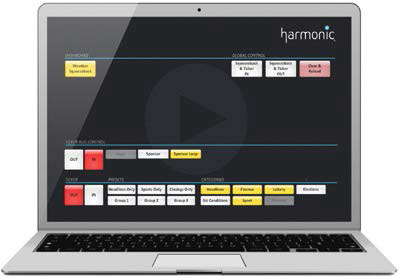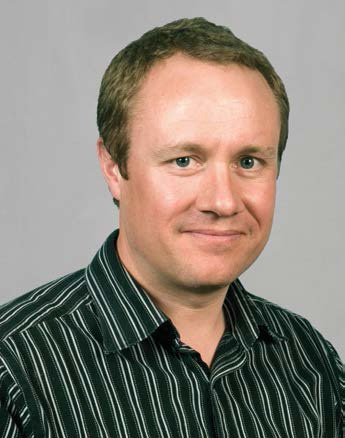The Benefits of Virtualization
OTTAWA—“Virtualization” is the big buzzword in efficient, money-saving broadcast systems. In plain English, virtualization is “a term that sums up the logical division of actual server resources [CPU, I/O, and RAM] into ‘virtual servers’ that support specific software applications at will,” said Al Kovalick, founder of Silicon Valley’s Media Systems Consulting and cloud columnist for TV Technology. “Virtualization allows broadcasters to ‘spin up’ new automation systems, content channels and distribution platforms in a purely software environment; rather than having to purchase, install and service specific hardware for each new project.”
‘VIRTUAL SERVERS’
Virtualization is the natural add-on to the broadcast industry’s existing software-based automation systems; the kind that control day-to-day program scheduling, content playout, and channel-in-a-box applications. These automation systems save broadcasters money by eliminating the need to buy expensive proprietary hardware every time they want to add a new process/playout stream; by allowing the work formerly done by this hardware to be performed by low-cost commodity servers. Virtualization takes this cost-saving process a step further by replacing physical computers with “virtual servers” carved out of the broadcaster’s existing server resources.

Harmonic Polaris Live Because today’s automation systems are software-based, vendors such as Imagine Communications are encouraging broadcasters to target these systems as their initial points of entry into virtualization.
“We see automation as being a fulcrum point for customers wanting to make use of virtualization, because they can do as much or as little as they want to,” said Chuck Kocsis, senior product manager for the Dallas-based company. “This flexibility gives broadcasters the comfort zone many need before venturing into a new technology.”
At the same time, virtualizing a broadcaster’s automation system can provide tangible benefits for the entire operation. The reason: “Presuming the word ‘automation’ implies operations without the requirement for human intervention, 95 percent of operations can be automated,” said Rush Beesley, President of RUSHWORKS in Flower Mound, Texas.
NO MORE DEDICATED HARDWARE
Whether software-based systems are operated on a broadcaster’s own data center, a third-party data center in one or many locations, or in the private or public cloud, virtualization offers the potential for broadcast operations to become entirely software-driven. In its broadest sense, this means an end to discreet pieces of proprietary broadcast hardware from content acquisition to editing, mixing, recording, and commercial/program playout to multiple platforms.
As a result, virtualization moves the cost of new channel launches and production facility upgrades from money-intensive capital expenditures (CAPEX) to more manageable operating expenditures (OPEX). “You no longer have to prebuy or overprovision your facility with physical equipment, that you may not know if you’ll be using for the next year, or two, or three,” said James Stellpflug, vice president of product marketing for Belgium-based EVS.
Get the TV Tech Newsletter
The professional video industry's #1 source for news, trends and product and tech information. Sign up below.

Jean-Louis Lods, director of business development for DMC One content distributor that has already implemented virtualized channel playout and distribution is Amsterdam’s Digital Media Centre (DMC). It provides European playout services to A&E Networks, BBC Worldwide, CBS, and Fox Networks Group; among others. DMC has deployed Pebble Beach’s Orca software-defined virtualized IP channel solution on the company’s Private Broadcast Cloud located in the Equinix AM3 datacentre, about 3.7 miles away from DMC’s new operations center.
The payoff: “Time to market [for a new channel] and the challenge of acquiring an assortment of equipment from different vendors and connecting these together with SDI cabling has been removed, while commissioning a new channel is greatly reduced from a typical lead time of 10-12 weeks to literally hours, if not minutes,” said Jean-Louis Lods, director of business development for DMC. “This time-to-market feature naturally lends itself to support for services such as pop-up channels, companion channels for special events on OTT, and finally simply more redundancy if and when required.”

Karl Mehring, director of playout and delivery for Snell Advanced Media (SAM)BUILD UP, TEAR DOWN
The ability to create temporary new services to is one of main advantages of virtualization, according to Karl Mehring, director of playout and delivery for Snell Advanced Media (SAM). “This flexibility lets broadcasters launch new channels to take advantage of short-term opportunities, such as the Olympics, and then to shut down those channels once the opportunities have passed.”
Because virtualized deployments are entirely software-based, launching new services over a broadcaster’s existing distribution system “comes down to a licensing question,” said Andy Warman, director of production and playout strategy and market development for Harmonic in San Jose, Calif. “You just increase your licenses when you add a new content service, and reduce them when the service is shut down.”
Factor in the ability of software-defined virtualized deployments to do as much or as little as a broadcaster requires, “and we are moving to a content service environment where you are able to customize a playout solution almost on demand,” said Shawn Maynard, vice president/GM for automation systems provider Florical Systems in Gainesville, Fla.
Moving to a virtualized playout environment can also protect broadcasters from human-caused playout disruptions. “This is because everything is being remotely fed into master control from a virtual machine that’s living in a nice environmentally-controlled server room; well-protected from the normal issues that can occur in a control room where somebody can spill coffee into a piece of equipment,” said Dave Turner, executive vice president of ENCO Systems in Southfield, Mich.
Tally up the many advantages of virtualization, and one can see why “broadcasters are not looking to build their own rack rooms anymore,” said Scott Rose, senior director of product management, digital media for Grass Valley. “Instead, most of the major broadcast groups are looking at trialing both virtualized technology and varying rates of IP in their facilities, and some are starting to adopt them in line with their equipment replacement cycles.”
NOT A PANACEA
Clearly, moving to virtualized automation offers substantial benefits to broadcasters.
“But it’s a bit of a misnomer that you put something into a virtualized environment and everything magically takes care of itself,” said Eric Openshaw, general manager for Pebble Beach North America. “There are a number of network infrastructure variables, especially in a real-time system, that the engineers at the operator’s facility need to understand and interact with, which require a unique IT skillset beyond traditional broadcast engineering. It’s not set-it-and-forget-it.”
As well, cloud-based virtualized systems can be inefficient and costly if the data farms that support elements of these systems are geographically distant from each other.
“For any workflow automation system that needs to move media from point A to point B, you better be sure that the media is very close to where it is being processed,” said Paul Turner, vice president of enterprise product management for Telestream in Nevada City, Calif. “Otherwise a simple copy, which would take a matter of minutes in your facility, could take hours because the data has to keep going between Singapore and Seattle.”
This said, the efficiencies and cost savings provided by virtualized automation make this option worthy of consideration by broadcasters large and small.
James Careless is an award-winning journalist who has written for TV Technology since the 1990s. He has covered HDTV from the days of the six competing HDTV formats that led to the 1993 Grand Alliance, and onwards through ATSC 3.0 and OTT. He also writes for Radio World, along with other publications in aerospace, defense, public safety, streaming media, plus the amusement park industry for something different.

